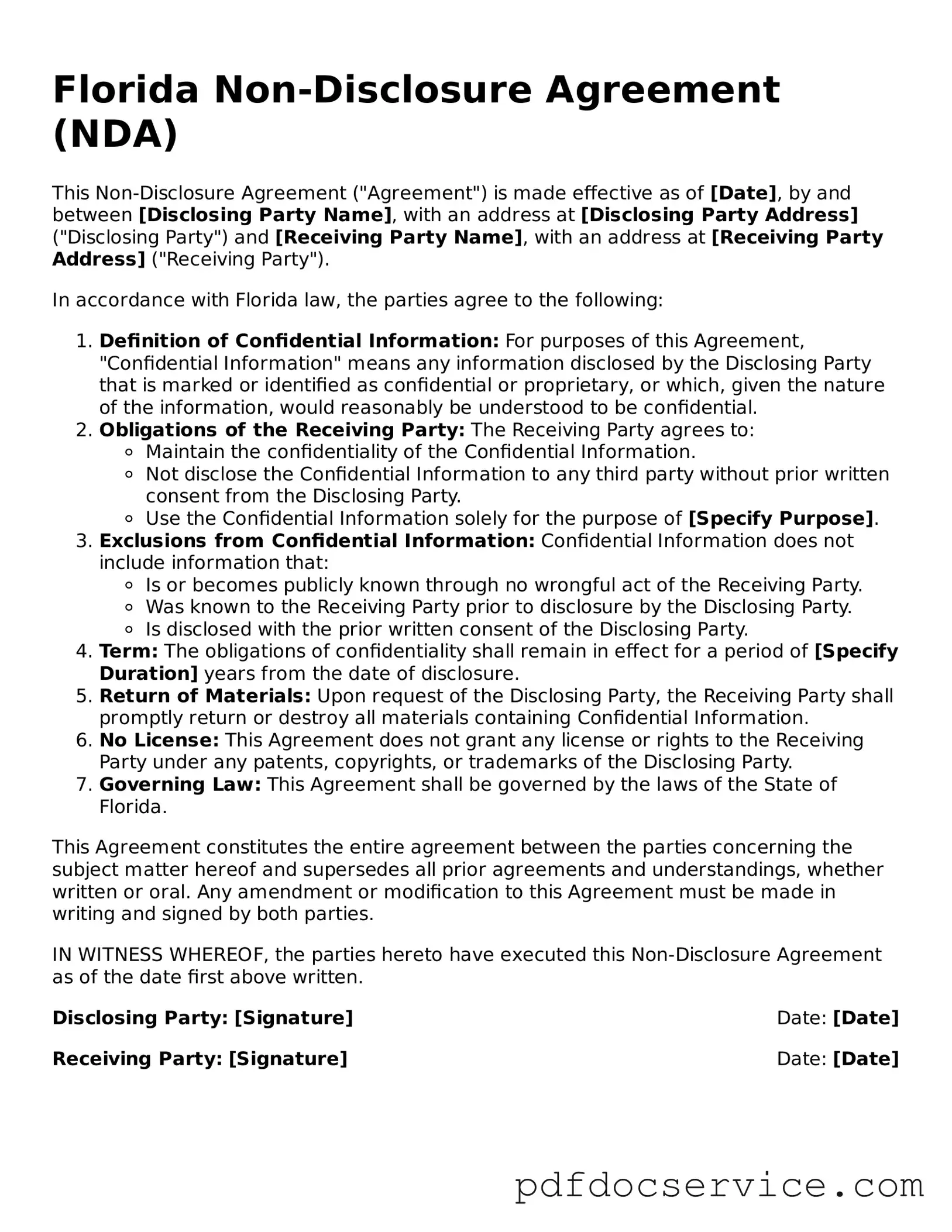What is a Florida Non-disclosure Agreement (NDA)?
A Florida Non-disclosure Agreement (NDA) is a legal contract designed to protect confidential information shared between parties. This agreement ensures that sensitive information, such as business secrets, proprietary data, or trade secrets, remains confidential. Both parties agree not to disclose this information to unauthorized individuals or entities.
Who typically uses a Non-disclosure Agreement in Florida?
NDAs are commonly used by various individuals and businesses, including:
-
Entrepreneurs sharing business ideas with potential investors.
-
Employers and employees during the hiring process.
-
Companies engaging in joint ventures or partnerships.
-
Consultants who may access sensitive information while providing services.
What should be included in a Florida NDA?
A well-drafted Florida NDA should include the following key elements:
-
Definition of Confidential Information:
Clearly outline what constitutes confidential information.
-
Obligations of the Receiving Party:
Specify the responsibilities of the party receiving the information.
-
Duration of Confidentiality:
Indicate how long the confidentiality obligations will last.
-
Permitted Disclosures:
Identify any circumstances under which disclosure is allowed.
-
Consequences of Breach:
Explain the repercussions if the agreement is violated.
How long does the confidentiality obligation last?
The duration of the confidentiality obligation can vary based on the terms agreed upon by the parties. Typically, NDAs specify a duration of 1 to 5 years. However, some information may require indefinite protection, especially if it remains relevant to the business or industry.
Can a Non-disclosure Agreement be enforced in Florida?
Yes, NDAs can be enforced in Florida, provided they are properly drafted and executed. Courts in Florida generally uphold NDAs as long as they are reasonable in scope and duration. If a breach occurs, the injured party may seek legal remedies, including damages or injunctive relief.
Are there any exceptions to the confidentiality obligations?
Yes, there are several exceptions where disclosure may be permitted, including:
-
Information that is already public knowledge.
-
Information received from a third party without a confidentiality obligation.
-
Information independently developed by the receiving party.
-
Disclosure required by law or court order.
What happens if someone breaches the NDA?
If a party breaches the NDA, the injured party has several options. They may pursue legal action to seek damages, which can include monetary compensation for losses incurred due to the breach. Additionally, the injured party may request an injunction to prevent further disclosure of the confidential information.
Is it necessary to have a lawyer review an NDA?
